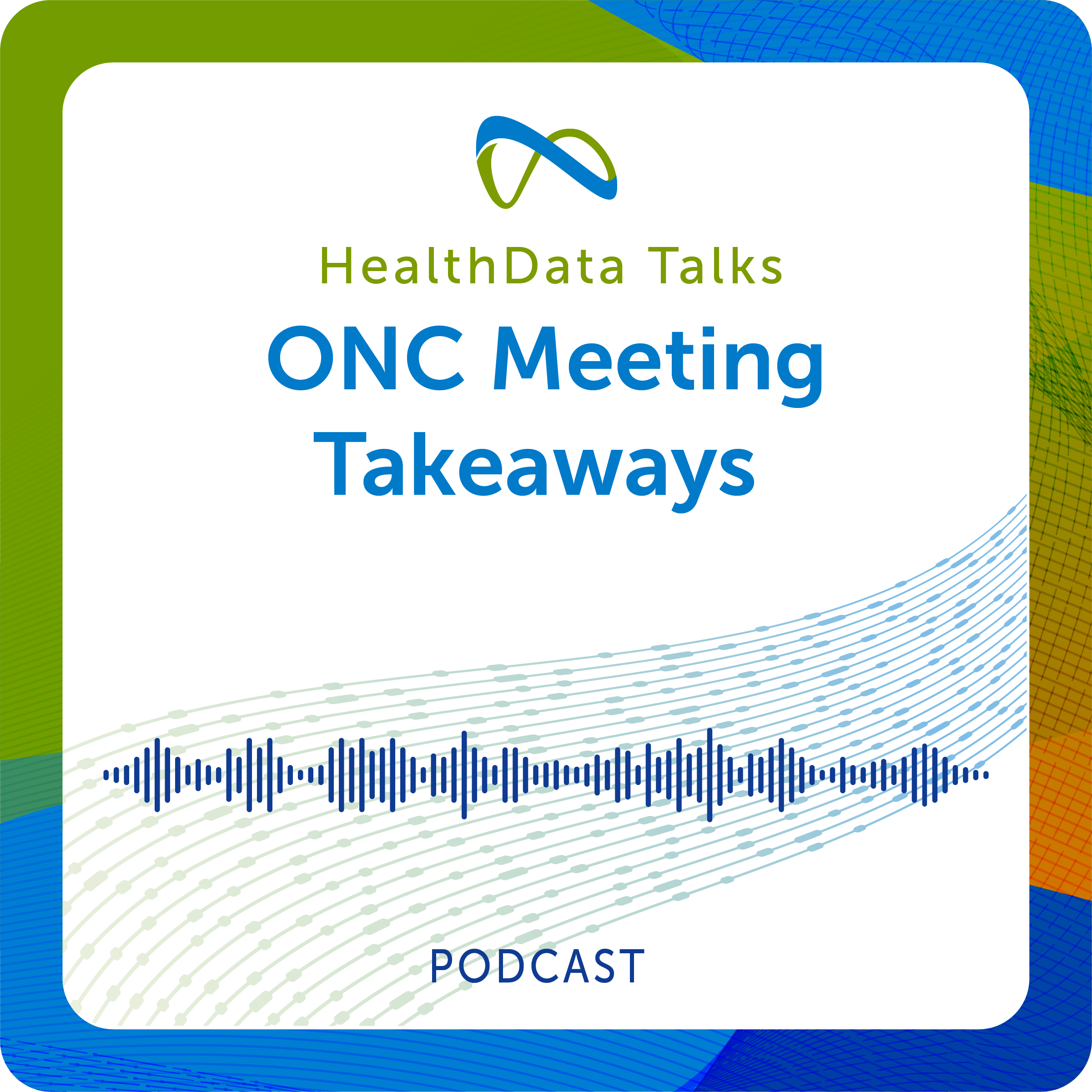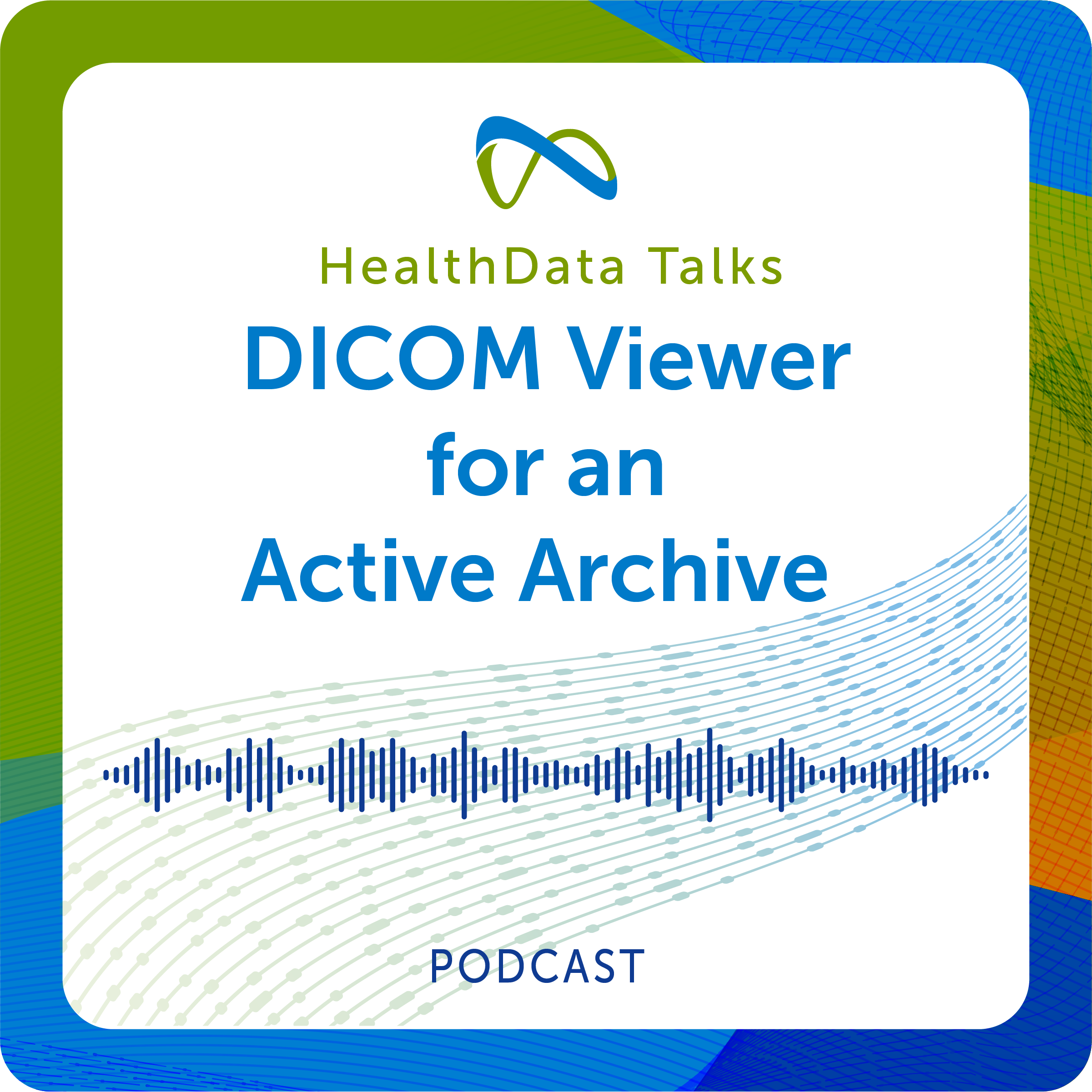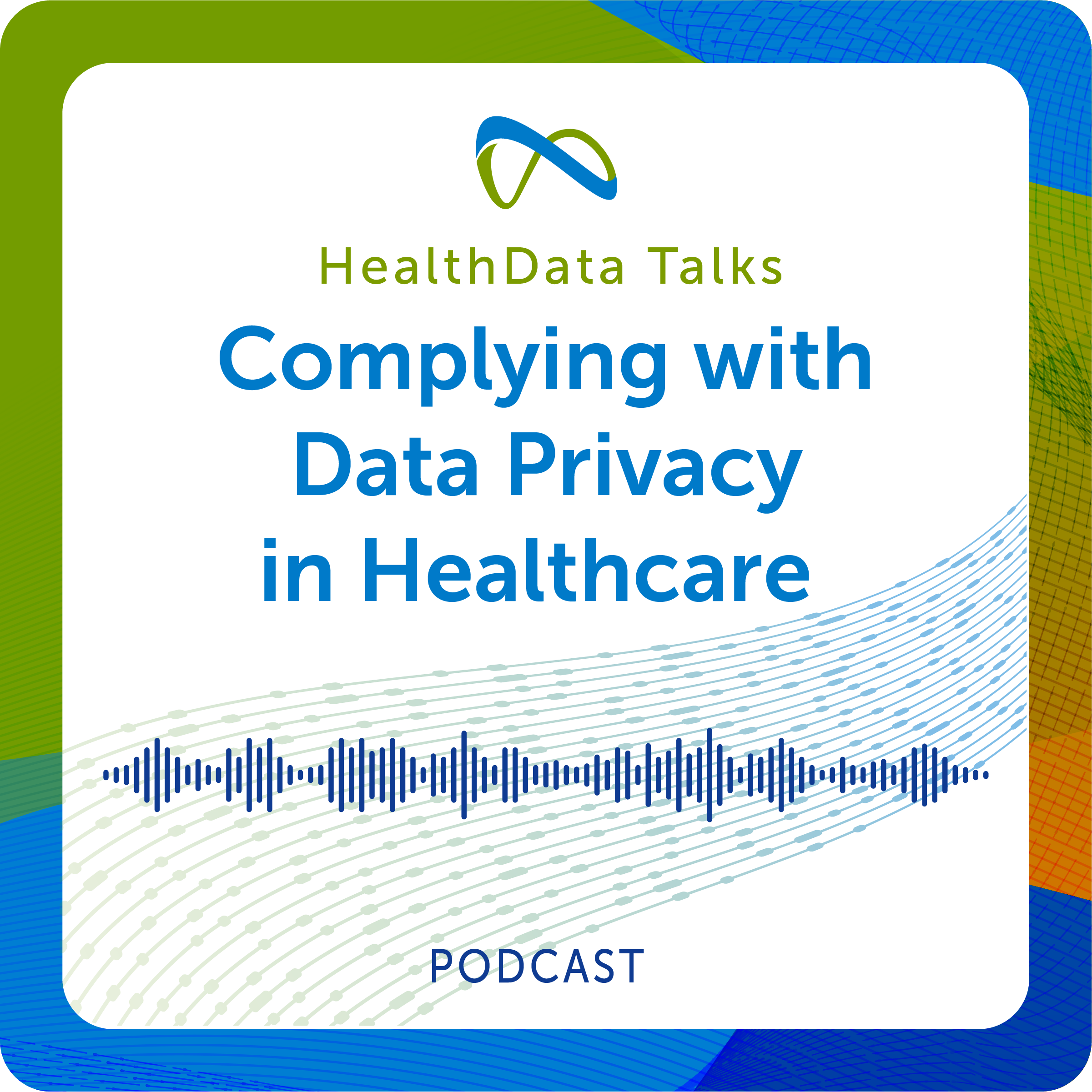[00:00:00] Speaker A: You.
[00:00:02] Speaker B: Welcome to health data talks, where industry experts offer bitesized tips and trends for managing legacy data.
[00:00:12] Speaker A: Hello, thank you for joining us. I'm Amy Holmes with Harmony Healthcare it. At Harmony, our specialty is working with legacy Data. We've been focusing on that in healthcare for the past 17 years, so we've encountered a lot of extra action work over that time and we work on data migration and archive projects for our customers. So today we have Daryl Mays, our solution engineer director at Harmony, joining me to talk about this topic. Thanks for being here today, Daryl.
[00:00:39] Speaker C: Thanks Amy. Happy to join.
[00:00:42] Speaker A: So Daryl, to start, can you give us just a brief background on yourself and your role here at Harmony?
[00:00:47] Speaker C: Yeah, sure thing. I've been at Harmony Healthcare it for about twelve years now. I started off in the data extraction and integrations and services side of the fence, built up the solutions analyst team, and then moved over on the solutions engineering side of the fence.
[00:01:05] Speaker A: So what does solution engineering mean? What is your team responsible for?
[00:01:10] Speaker C: The solutions engineering team is really a pre contract function, and our job is to understand the client needs around an archive or migration so that we can craft the proper solution to solve the particular client ask.
So our work kind of meets at a crossroads of architectural engineering and data engineering and sales operations and product knowledge. There's a lot of technical aspects to it, but at the end of the day, it really is about asking questions and understanding the core of the client need. Otherwise, it's kind of like building a vehicle. As I like to say, you can build a really nice car, but if the client really wanted a jeep, you haven't done your job.
[00:01:46] Speaker A: That's true. So, generally speaking, how important is understanding data lineage and dependencies before digging into an extraction project? Especially when it comes to the database types, platforms, data scope I've been in.
[00:02:01] Speaker C: The medical automation and data space for a little over 30 years now, and the idea of data lineage is just another name for knowing the data you're working with. I think without having context to the data, it really is a quote our CEO likes of mine, all ones and zeros. In that understanding of the data, you have to get down in the dirt of things. And what I mean by that is you have to know what platform products are running on and the data lives on, how it's used, how it's structured, who the consumers are, those kinds of things.
And knowing those kinds of things, both in the extraction of the build work, you're going to be much more effective in whatever you're delivering. Whether that happens to be an archive of migration you're doing data analytics or reporting any of those types of activities.
[00:02:50] Speaker A: That's certainly true. Speaking of understanding the data, I know non structured data like notes and images are the bane of many of the people working on extractions. So let's hear about the challenges of extracting that non structured content from diverse data sets. What are Harmony's kind of go to strategies for wrangling it that we've seen success with?
[00:03:10] Speaker C: Well, I think the most complex thing you run into in the non structured content end is, and what lends a little bit of complexity to it or makes it tricky is because it can be such a vast set of content. It can be scanned documents, images, forms, worksheets, or anything the originating product needs to capture. Our strategy around it, though, is very similar to what we do with discrete data, is to get an understanding of what it is and how it's used in the context of the product and the data consumer. Once we have that knowledge, we can then go about determining the technical underpinnings, whether it is in the database or stored outside of it, what format it's in, whether it's encrypted or it's compressed in a format that's not industry standard, those kinds of things. I'd say in that chain, the last step really is how you're going to convert that to something that is industry standard if it's required. I think a lot of data engineers tend to look at it through the other end of the tunnel and come at it from, oh, is this in a format that I know angle? And when it isn't, then either consider it a dead end altogether, or try to back into its technology and purpose to gain context of that content.
[00:04:23] Speaker A: I think that kind of point of view is one of the reasons why we've had success surveying many health systems and idns that often have that larger, more complex data sets. Can you talk a little bit about how harmony services the unique needs of these large organizations?
[00:04:40] Speaker C: While there's certainly some shifts and pivots that we do in working with large healthcare systems and idms, we generally leverage our standard processes. We might eliminate some high level steps in the introduction processes because many of these entities and organizations we're working with, time and again, they already understand those steps. We also might have personnel on the other end that are responsible for the content, the care and feeding of it in the legacy application or the legacy infrastructure. So they'll know where that content lives. They can provide us backups versus us going and getting them those kinds of things. But I'd say that the real core of what we do within our proven standard processes serves us well, whether that be in a small organization or a large IDN.
[00:05:25] Speaker A: So what are some of the unique data challenges faced by those larger idns, given their multi hospital structures and often the larger number of applications that they have under their management?
[00:05:36] Speaker C: Yeah, I'd say that the real challenge within a multi hospital structure versus maybe a single clinic entity, those two big challenges within there are within the terms of the legacy data that needs to be archived or migrated around the mix of the platforms and the legacy software solutions that make up their decommissioning portfolio and personnel who have experience with those legacy solutions. It can make the route to understanding the what of the legacy solution difficult and the what is what drives a route to the solve at the end of the day. Fortunately, in a lot of those cases, we can assist clients with those legacy systems in terms of some of their infrastructure. And by infrastructure I mean both what it runs on database platforms, those kinds of things, due to our vast experience with over 550 software brands that we've worked with over the years.
[00:06:26] Speaker A: So thinking about those challenges that they're facing, do you have an ideal engineering process when working with an IDN client from that initial consultation to the implementation and then the support afterwards?
[00:06:40] Speaker C: Kind of a difficult question to answer because I don't think it's a one size fits all kind of framework. More generally, I'd say the biggest advantage, whether it's in idns or clients with a small set of legacy solutions, is to have someone that knows the product on staff. And by knows it, I mean can know it from a usage standpoint, can know it from an infrastructure standpoint, those kinds of things. Because if you strip away all the technical wizardry involved in the process, at the end of the day, you're trying to preserve patient care data and have it accessible to the staff. Having that person that can sure that the critical content that existed previously is somewhere that is accessed and secured and can provide context in both what is needed for retention as well as looking at through the right lens and the target endpoint. And by target endpoint there, I mean the consumers that are going to use it once that legacy application is retired is really key to successful outcomes.
[00:07:35] Speaker A: So you're working with a lot of different organizations. How do you help foster the strong relationships with it teams and stakeholders within the idns to ensure a successful data extraction project?
[00:07:49] Speaker C: Well, I think that comes back to one of our core values here at harmony, which is to be easy to work with as we're working with client resources and teams, not just on the extraction engineering side, but throughout, we try to be supportive of what clients are ultimately attempting to accomplish. I've had an opportunity where we've been collaborating with the client on it for a number of months. So instead of coming at it like some vendors would by saying, yep, looks like you have a real problem there. I've tried to be, and I think we all do. Within healthcare, it collaborative with them as an extension of their own team. I think the fact that we do that a lot here at Harmony is what has allowed us to have strong long term relationships with any of our clients.
[00:08:30] Speaker A: That's true. We have strong devotion to our core values, which I think helps serve us well.
For your sales engineers on your team that are working with these idns or other organizations, what are some of the best tips for identifying needs, showing ROI, and navigating those kind of complex procurement processes when we're trying to get a process going or a project going?
[00:08:55] Speaker C: I say on the need and ROI side of the fence, we pretty much covered that in some of the topics we talked about before. But to summarize it, it really comes down to understanding what is historically significant and necessary for content consumers in ongoing patient care. On the procurement side of the fence, I'd say no one to raise your hand. We're always willing to collaborate with outgoing legacy solution vendors, go forward, target system vendors, et cetera. As a client advocate, again, we handled a lot of knowledge around many legacy solutions and their respective vendors, and that tends to reduce some of the complexity around those procurement and delivery processes.
[00:09:34] Speaker A: So looking ahead, what do you see as emerging trends and technologies that will shape kind of the future of data extraction and healthcare?
[00:09:43] Speaker C: I think we're going to continue to see data platforms that become lack of better way to put it, more agnostic. The players in the space who are able to look at data transport, whether it be medical data or other kinds of data, from more of an efficiency angle and have agility versus a rigid set of, well, we've always used X platform or X technology are going to emerge as leaders. I also think the whole notion of proprietary, closed off data storage platforms are going to continue to die off. It's not to say they'll be less secure. Certainly the idea that you have to lock down the technology your product uses such a way that one in ten people in the world can use it, or more importantly, in the functions that we do and the services we provide, the data related to it, it isn't a viable future model that makes sense.
[00:10:29] Speaker A: And of course, we'd be remiss not to talk about perhaps the biggest trending topic in healthcare, which is AI. How do you see that affecting what we've talked about?
[00:10:39] Speaker C: Yeah, that certainly is the big buzword right now, AI, and I don't think there's any denying that has implications both on the data extraction and delivery side of the fence. If you just think about that as kind of a slice from the security angle and the ability for human touches to be removed from the process, it's significant. I think AI will also play a major role in the management and cataloging an incredible amount of data organizations have under management and stewardship.
[00:11:07] Speaker A: One thing we talked about internally is just making sure that AI is well vetted and secure, and you're thinking about it from all angles before adopting it in an organization, whether it's ours or a healthcare provider. So it's responsible adoption of it, right?
[00:11:26] Speaker C: Absolutely.
[00:11:28] Speaker A: Well, Daryl, thank you so much for taking time out to join us today. I think that was a good overview of data extraction challenges and addresses a lot of the questions that we field from healthcare organizations every day. Appreciate you jumping on.
[00:11:41] Speaker C: Thank you. It's been a pleasure to speak with you today and enjoyed it.
[00:11:46] Speaker A: And to our listeners, thank you for joining us. Be sure to tune in next time for another discussion about legacy data in healthcare.
[00:11:54] Speaker B: That's it for this session of health data talks. Check out helpful
[email protected] and follow us in your favorite podcast app to catch future episodes. We'll see you next time. Our.


